In Slovenia’s Vipava Valley, Sustainable Family-Run Wineries, Dining Rooms & Trails Abound
This website uses affiliate links which may earn a commission at no additional cost to you. As an Amazon Associate I earn from qualifying purchases.
Updated: 20th June 2024
Sustainability isn’t a buzzword in Slovenia; it’s a way of life. And while many of us ponder precisely what that means, the Slovenians are tending to their beehives, sipping on fresh wines from local cellars and devouring delicious cheeses at family farms, usually accompanied by a heart-warming grin.
Welcome to the Vipava Valley, a foodie ecotourism utopia served up with a degustation of luscious landscapes, adventure activities and vintage villages, all washed down from the barrels of an underground world.
In fact, so much of the valley is invisible at ground zero the locals joke about the majority of their homes being underground. Most people here don’t visit a co-op cellar to get their fermented grape juice; they pop downstairs to their own.
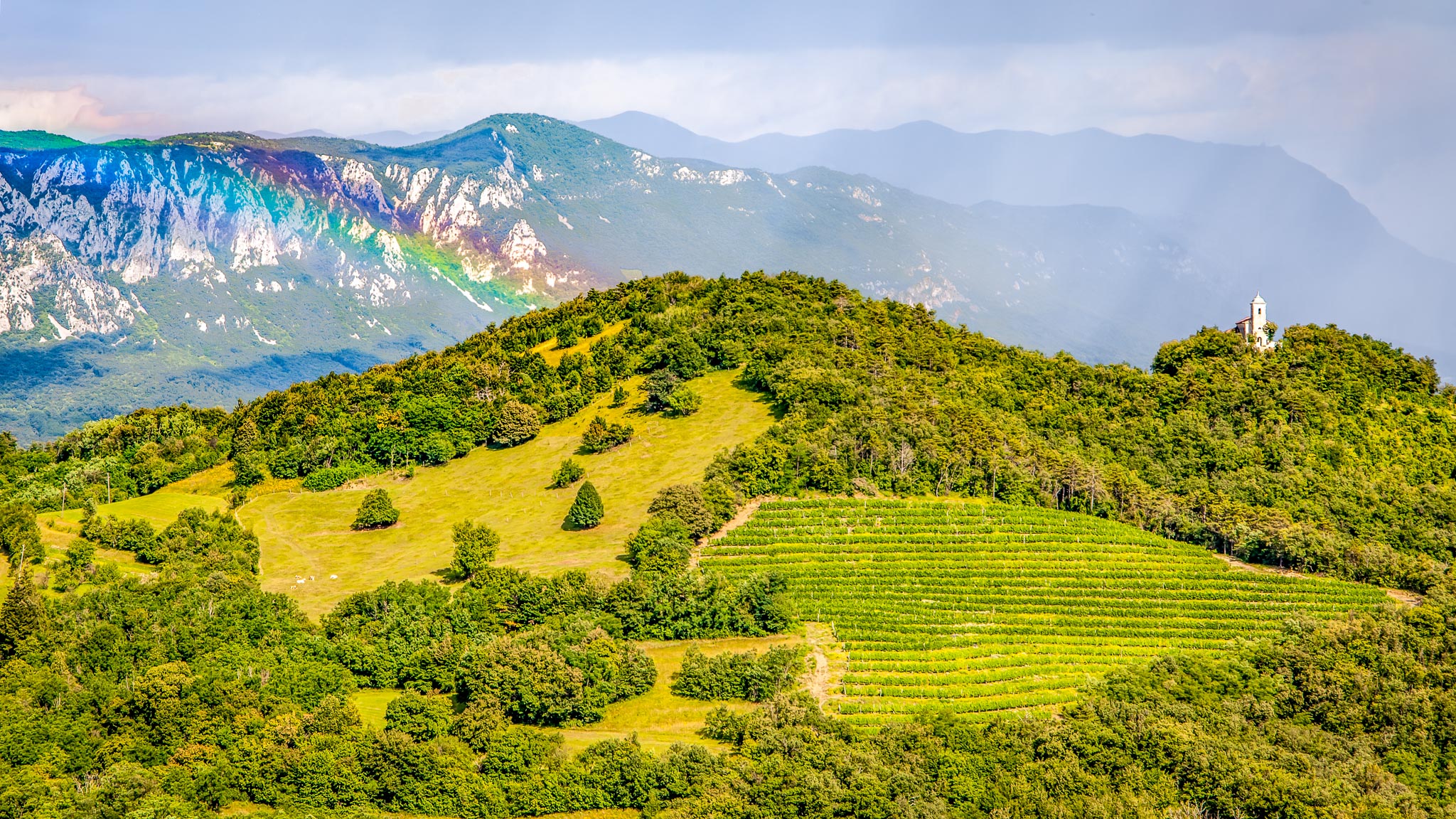
Vipava’s eco-conscious menu is extensive. From free electric car charging stations to milk vending machines and refilling wine bottles at local cellars. There’s even a wine train which will take you hopping between little villages and vineyards. And with nearly every village in the valley boasting its own natural spring, you can see why turning the conversation from water to wine is essential. Especially after sampling a few glasses of the very palatable local Zelen grape.
Across the valley, idyllic, undersized villages of white-washed churches and stone-clad houses unfurl. Vines dangle above balconies and terraces to provide a natural barrier to the mid-day sun. Dogs lazily stretch out while owners tend to their grapes or craft meticulous dishes in kitchens. I’d barely been in Vipava Valley an hour before my first encounter with one of the countless family-run restaurants. Down a little side alley, I settled into a walled garden for my first taste of Vipava Valley hospitality.
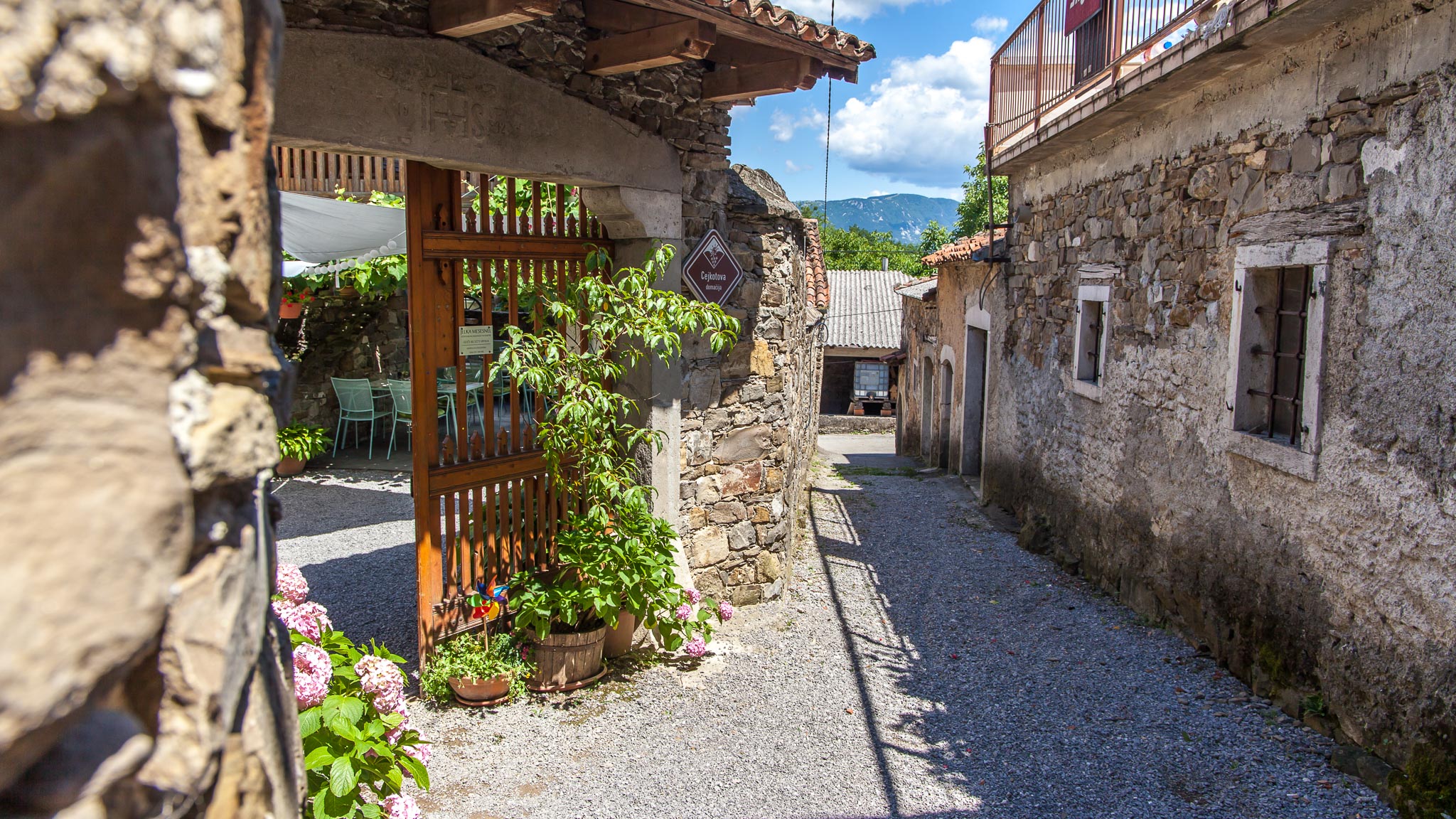
Historic hospitality at Cejkotova Domačija
Arriving at Cejkotova Domačija in Goče was like unwrapping a surprise gift on Christmas morning. This sleepy little village – the oldest in Slovenia – is somewhere you would easily skip if you weren’t in the know. But at this historic family home with just a handful of tables on the patio, I was about to discover exactly why this part of Slovenia is one of Europe’s foodie utopias.
Davorin, a well-built chap with a broad grin, welcomed me with a friendly handshake. Ushering me around his home like a long-lost friend, he handed me black-and-white photos of what his house was once like. Although, to my eyes, it’s relatively unchanged. Settling into the bowl-like chairs, the sun flickered through the vines, glistening against the homemade wine tumbling into the glass.
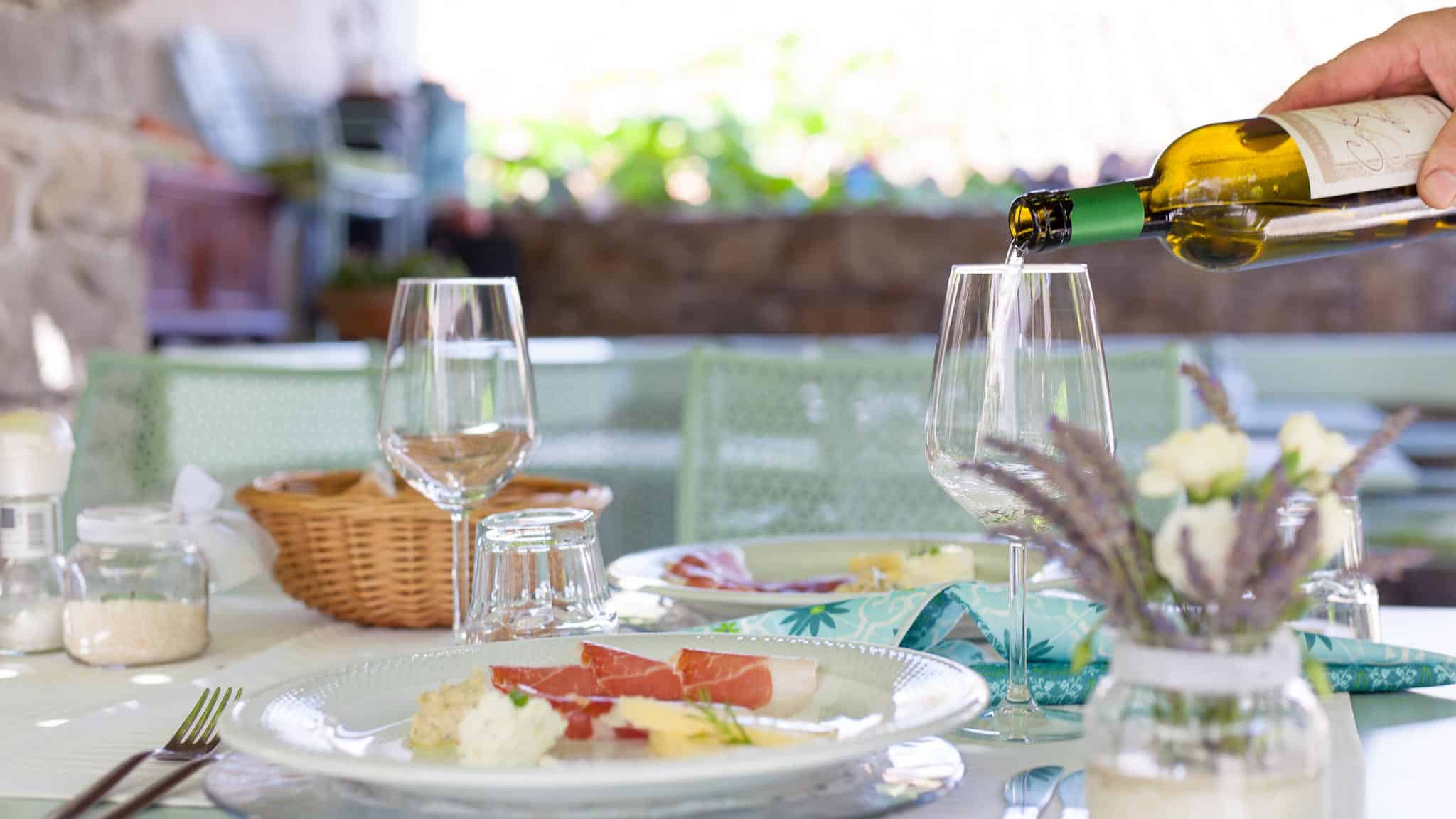
Each course of local cheeses, cured meats and baked delicacies was more mouth-watering than the last. Popping my head into the humble kitchen to see where this heavenly goodness was coming from, the smiling faces of a mother and daughter team greeted me. Davorin’s daughter was training to be a pastry chef, something she informed me while delivering a perfectly light cream tart to the table. Being so close to the Italian border, the cuisine hovers between light Mediterranean and Eastern European influences.
The location provides more than just food similarities. More than once over the following days, I’d gawp in awe at the rolling hills of vineyards and declare it was just like the Italy you see in the movies. I was half expecting a Vespa complete with a shawl-trailing Jennifer Coolidge to leisurely speed on by.
Lunch was rounded off with a trip down to the family’s cellar. The gentle flicker of candlelight guided us as the wine was lifted straight from barrels. It’s a given you would need a reservation to enjoy such a personal and intimate meal, so take this as a heads-up to book in advance.
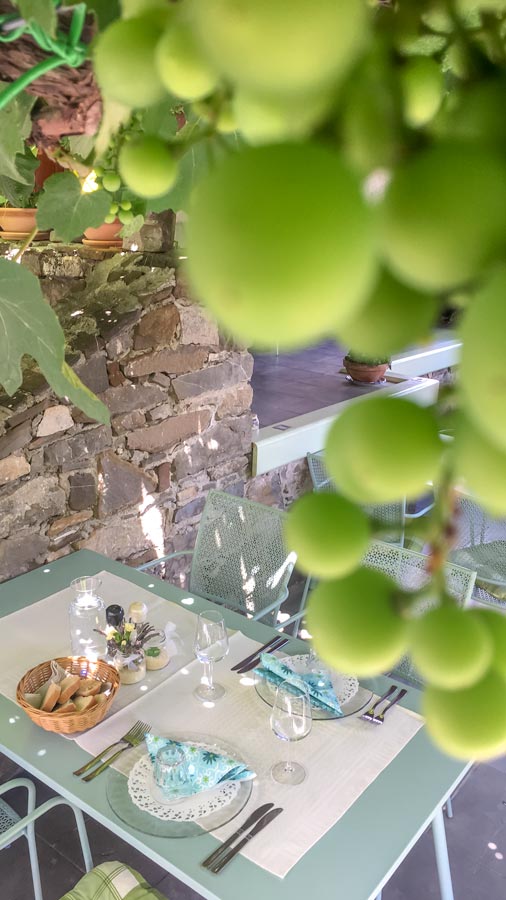
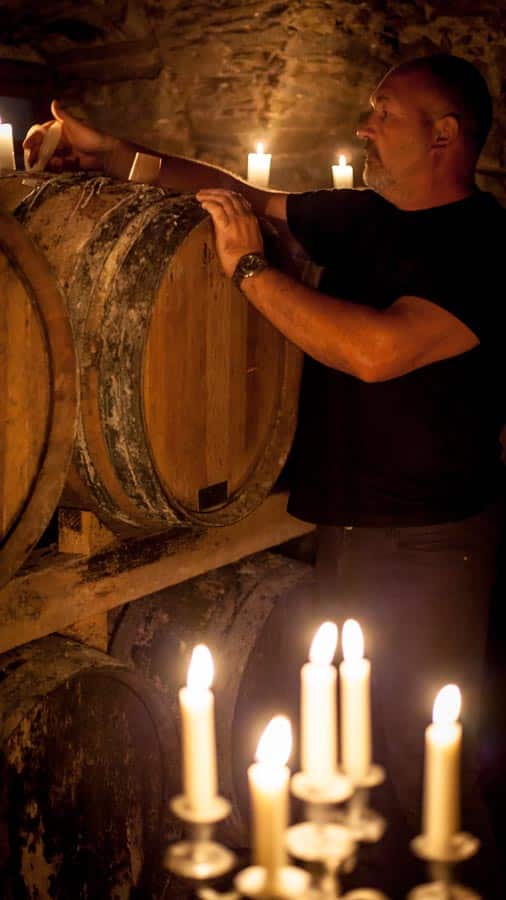
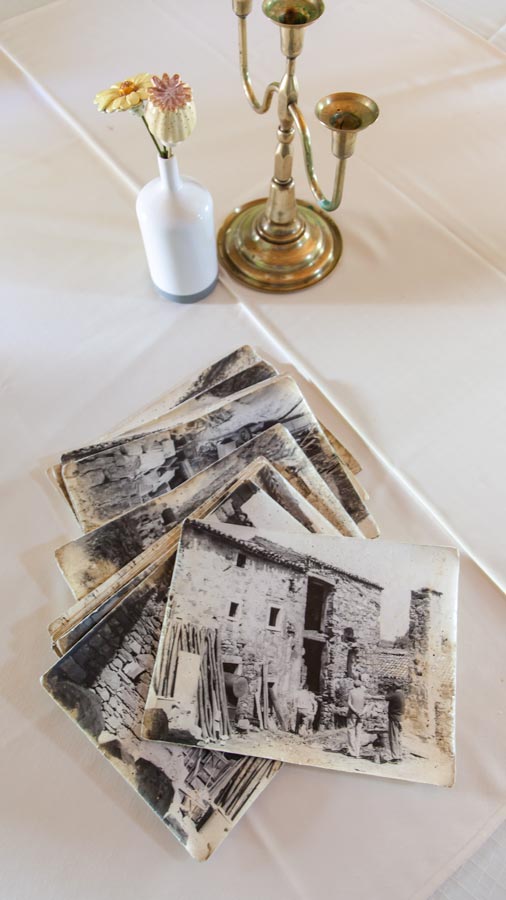
Slow travel begins in Stanjel
Before entering the Vipava Valley proper, Stanjel, the oldest settlement in the Karst area, will greet you. With a prime position and a fortified castle dating back to Roman times, it offers a first peek into the valley from its vantage points.
The 16th-century castle and the houses of the village, which were extended after the Turkish invasions stopped, had been destroyed in both world wars. You wouldn’t know it had endured such tragic damage without getting the debrief in the friendly tourist office, thanks to a painstaking restoration project.
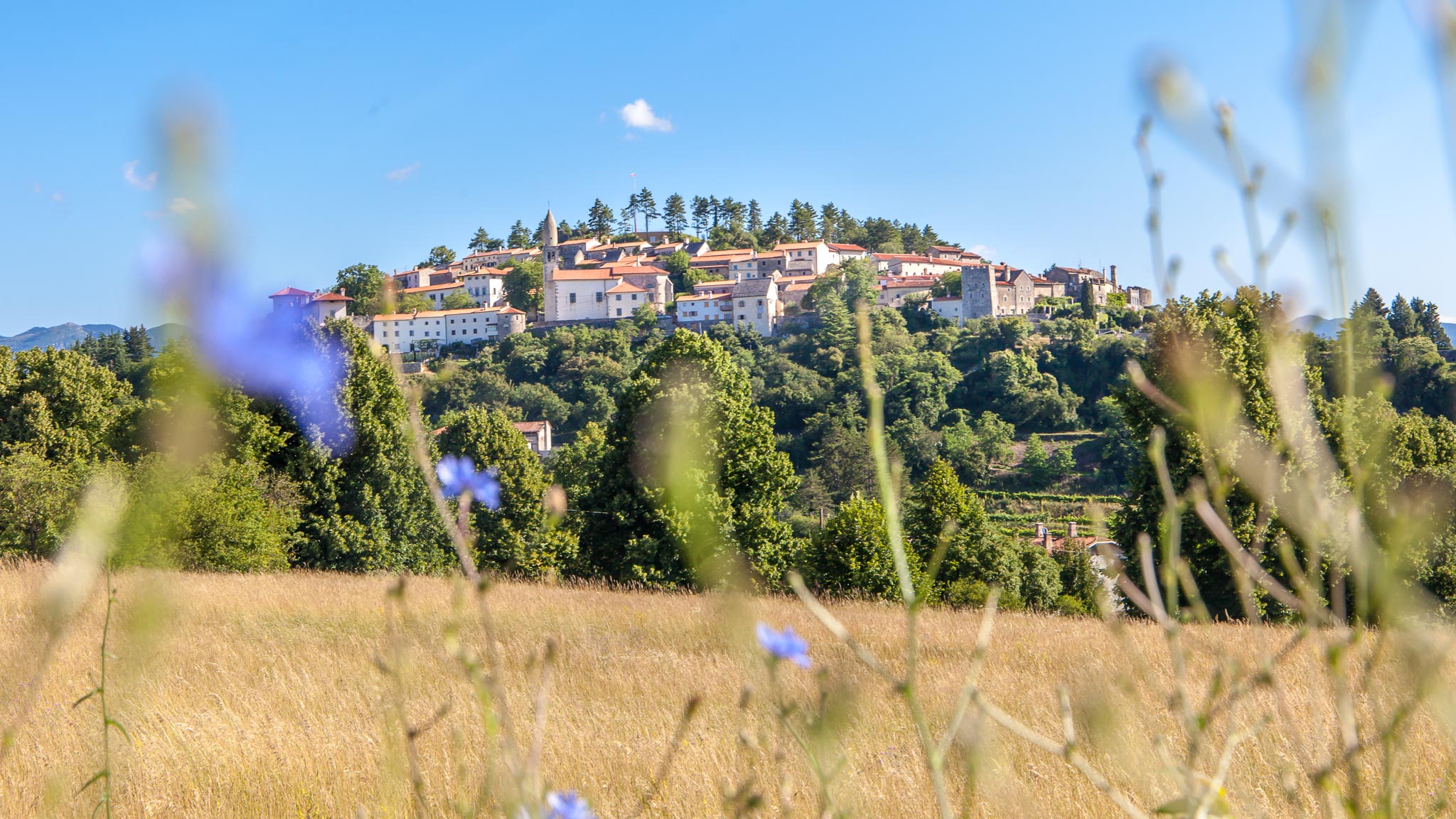
Stanjel may be petite in size, but that’s all part of its charm. Honey from local beehives is balanced on windowsills and sold on a trust system, with a small number of residents and tourists depositing their coins into colourful flower pots hung on walls. Walking the tight streets of Stanjel, where previously closed-off homes were enjoying a new lease of life as accommodation, is the perfect introduction to the passion and pride you’ll encounter throughout a visit.
It became clear over the coming days that a lot of youth who had moved on to bigger cities chasing opportunities were now returning to their homeland. “What do we have left if we don’t have traditions?” Jani, my guide, pondered with pride while personally recounting the tale of starting his business.
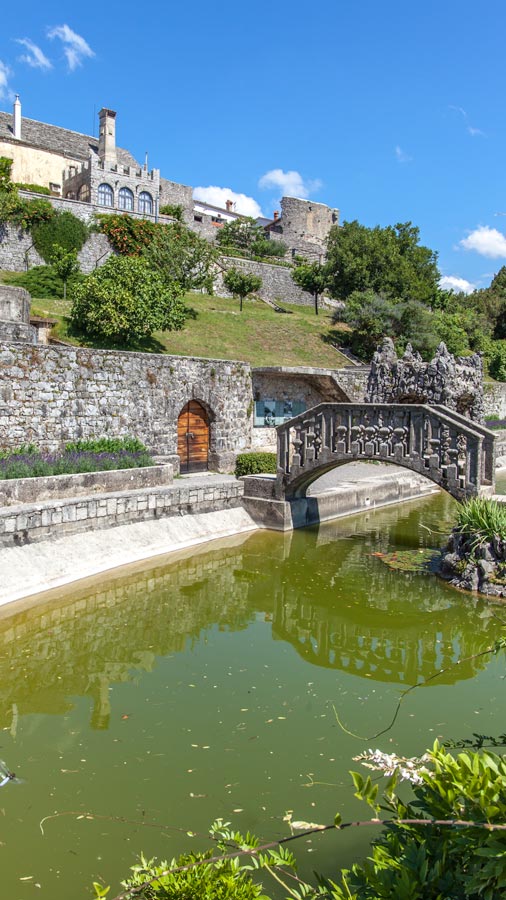
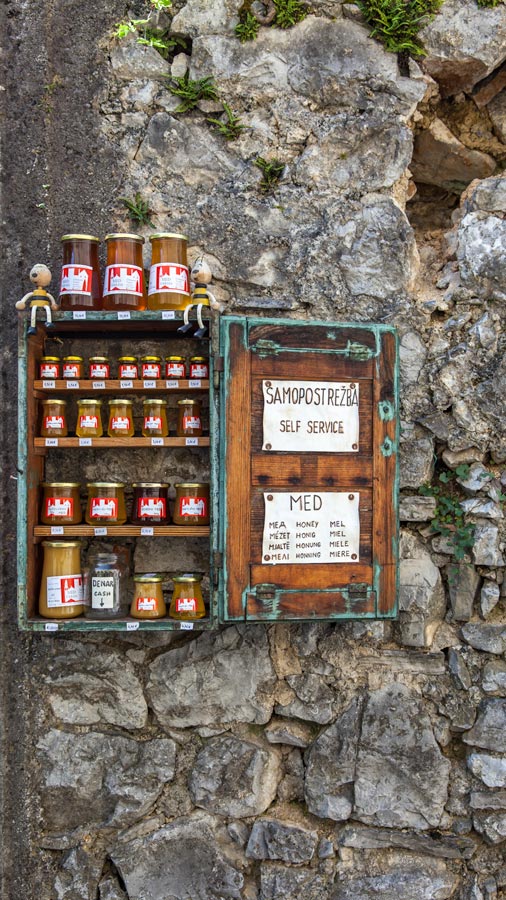
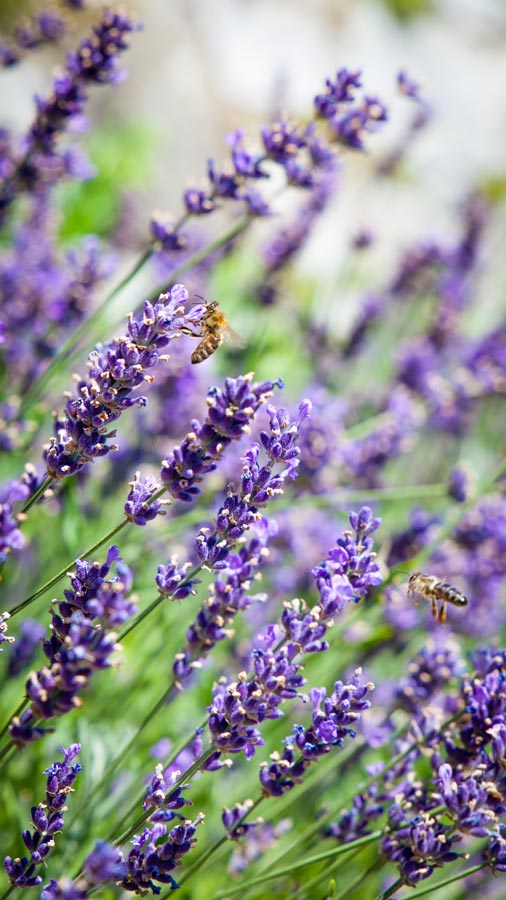
Slowly, the secret has slipped out about this stunning Slovenian retreat, creating more opportunities for new business. Entrepreneurial souls wanting to move back to their native villages have pounced on these opportunities in tourism, agriculture and local organic produce.
Each family I would meet during my stay had a different story that they were excited to share, making exploring this region so enchanting. It was never time to attend just another wine tasting or meal. It was instead time to befriend a new stranger, to hear personal stories, and to share delicacies and drops of wine in their home like long-lost family.
My stay in the Vipava Valley wasn’t just feeding my stomach; it was feeding my soul with family ties and never-ending stories of passion above profit. I’d stepped back in time a little. To a world where community came before corporations.
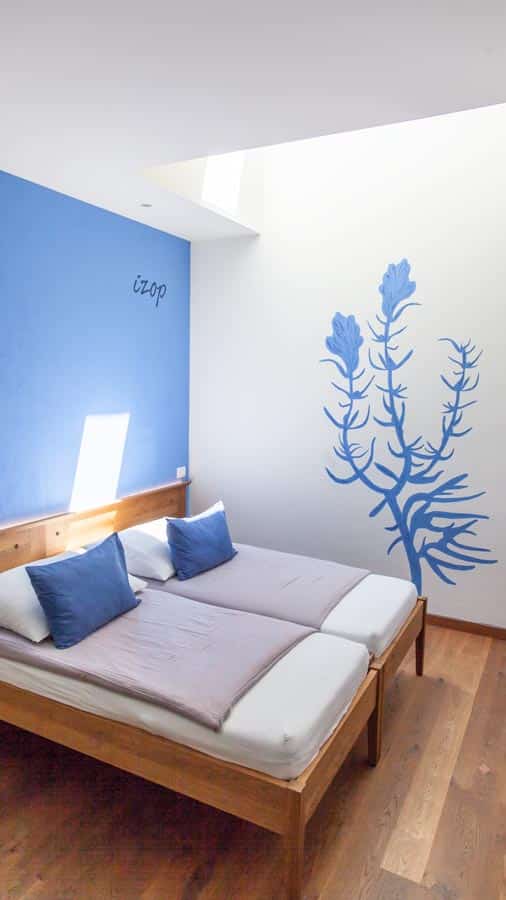
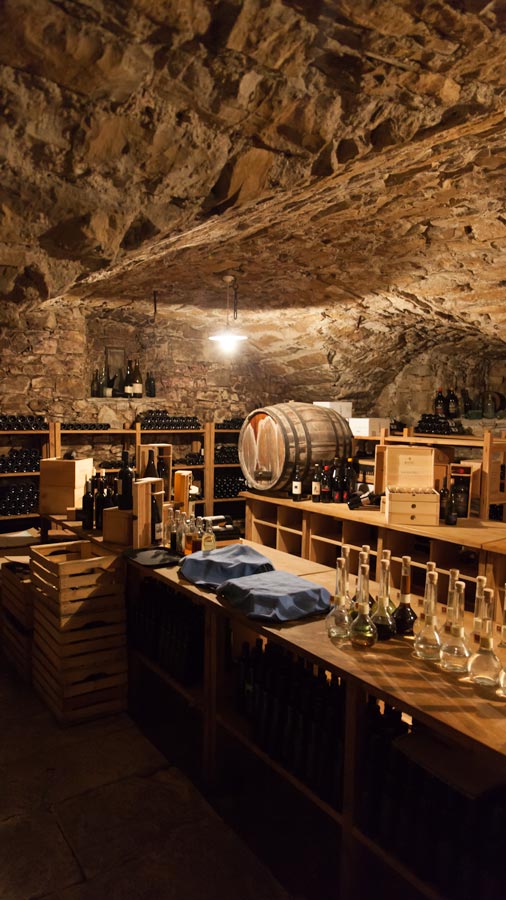
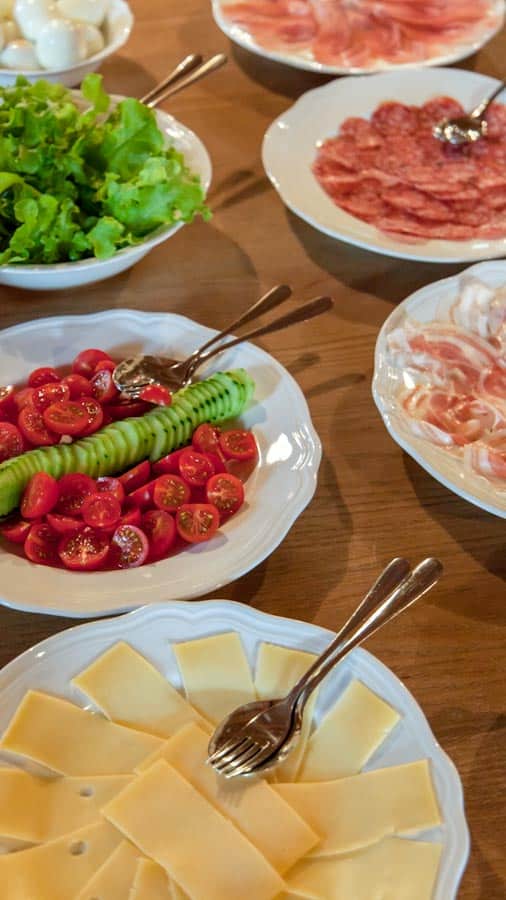
Checking into Majerija, a storied stay
Preserving the culture and staying sustainable extends beyond the menu in Vipava, something I discovered upon checking into the family-run restaurant-come-hotel that is Majerija.
Flanked by herb gardens for the kitchen, lavender plants abuzz with bees, and situated in the heart of the valley, the property didn’t seem big enough to hold the number of boutique rooms it boasted. But, as with much of Vipava, the answer was hiding underground.
The Majerija House was originally built in 1700 and gradually expanded to include outhouses for wine production and stables before being sold by the Count who owned it. To cut the story short, eventually, it passed out of the original family’s hands and was brought by the current owners.
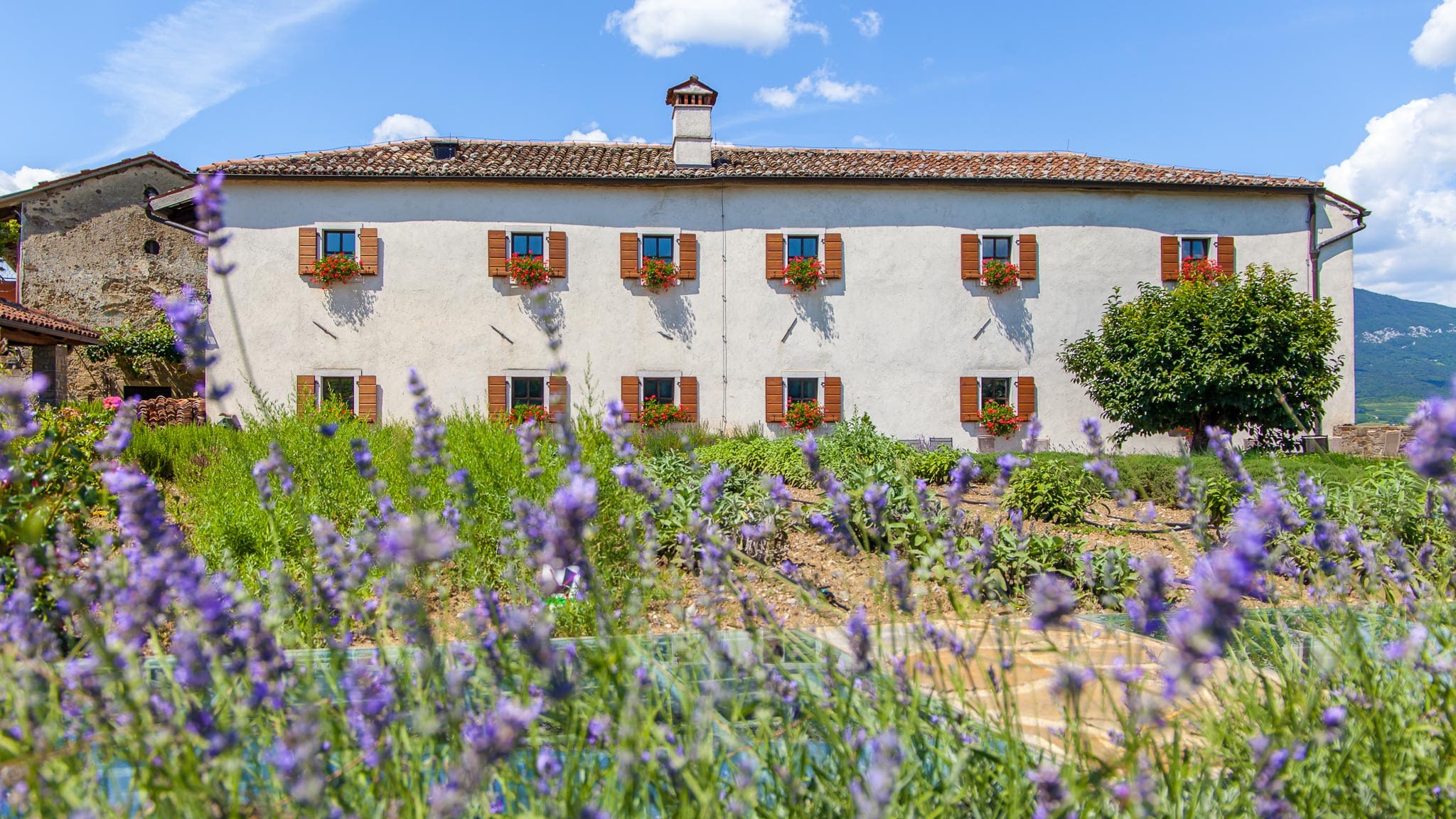
Being a cultural monument, the building had to be preserved, and a slow yet beautiful project endured, which saw the restaurant open 12 years after refurbishment started. With no room to add accommodation and the exterior of the building protected, a creative project saw modern underground rooms built with skylights and individual touches.
The restaurant serves delicious meals and wine, all locally sourced, with daily market trips to gather both breakfast and dinner ingredients. Rooms provide a perfect escape into an underground bolt-hole, and of course, a well-stocked wine cellar completes the package.
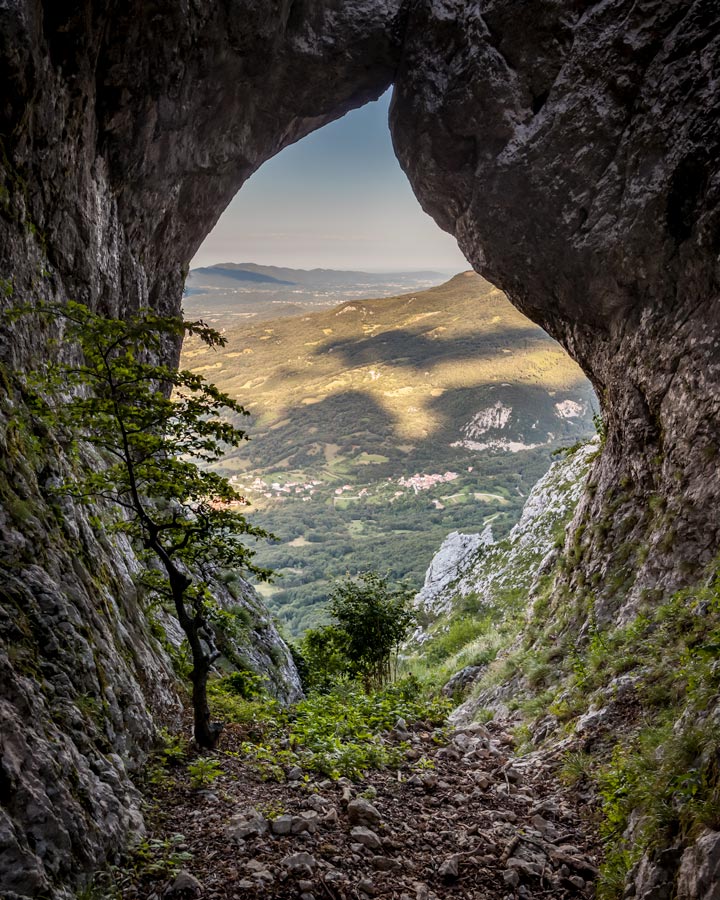
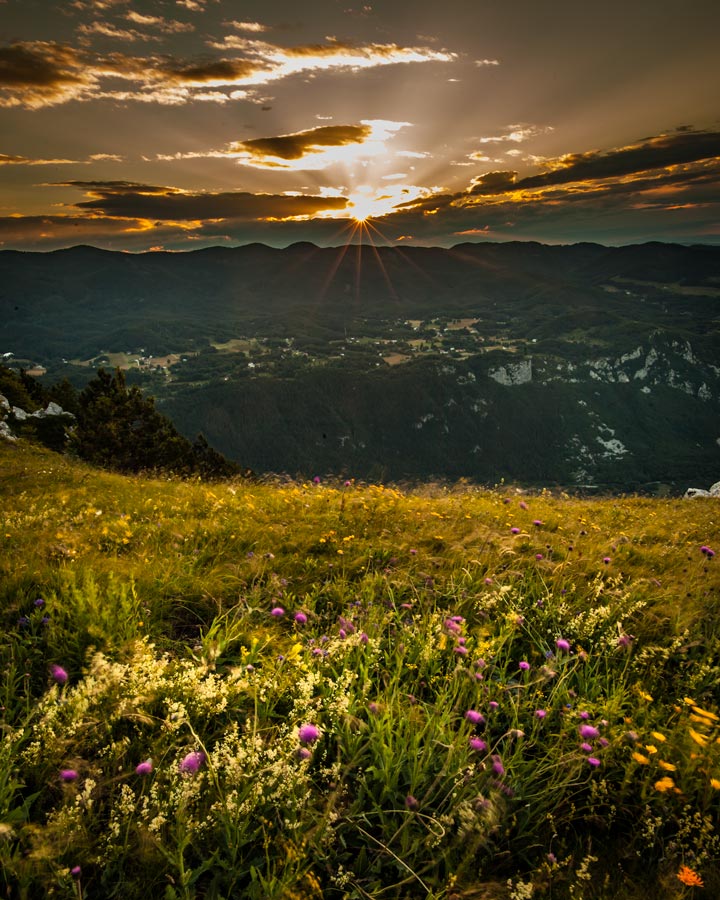
Adventures carried by winds
For those wanting to tackle a more adventurous side to the valley, Mother Nature has worked her magic to keep you entertained.
While cycling between villages and vineyards might be enough exercise to allow for another guilt-free tasting menu, the towering mountains and famous Burja wind – the local name for the gales that sometimes blast through the valley – also provide ample opportunities to embrace nature.
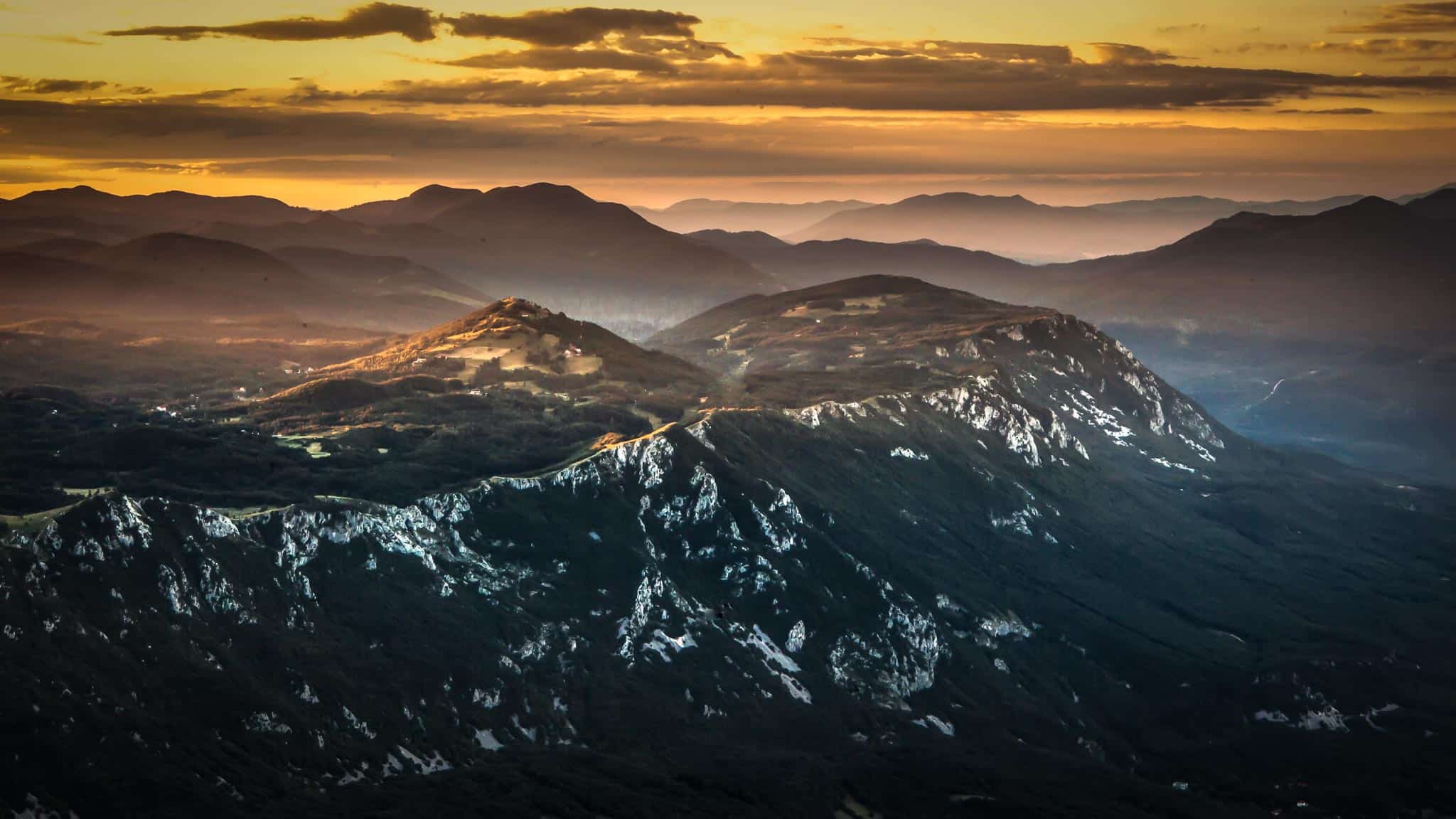
I mention the wind because, by the end of your Vipava Valley visit, you’ll regard it as a friend on a first-name basis, not a natural phenomenon. The Burja wind is to thank for much of the unique wine-producing climate, and with gusts sometimes coming in at over 200km, Jani joked with me one evening that the locals say: “If you have problems, just go out, and Burja blows all your problems away.”
But how does this wind render itself to the adventurous? Paragliding. This small corner of Slovenia is famous for those wanting to fly through the air, and I can only imagine a birds-eye view of this incredible landscape, with the coast, Italy, and Croatia on your peripherals, would be sublime if you don’t suffer from vertigo like myself.
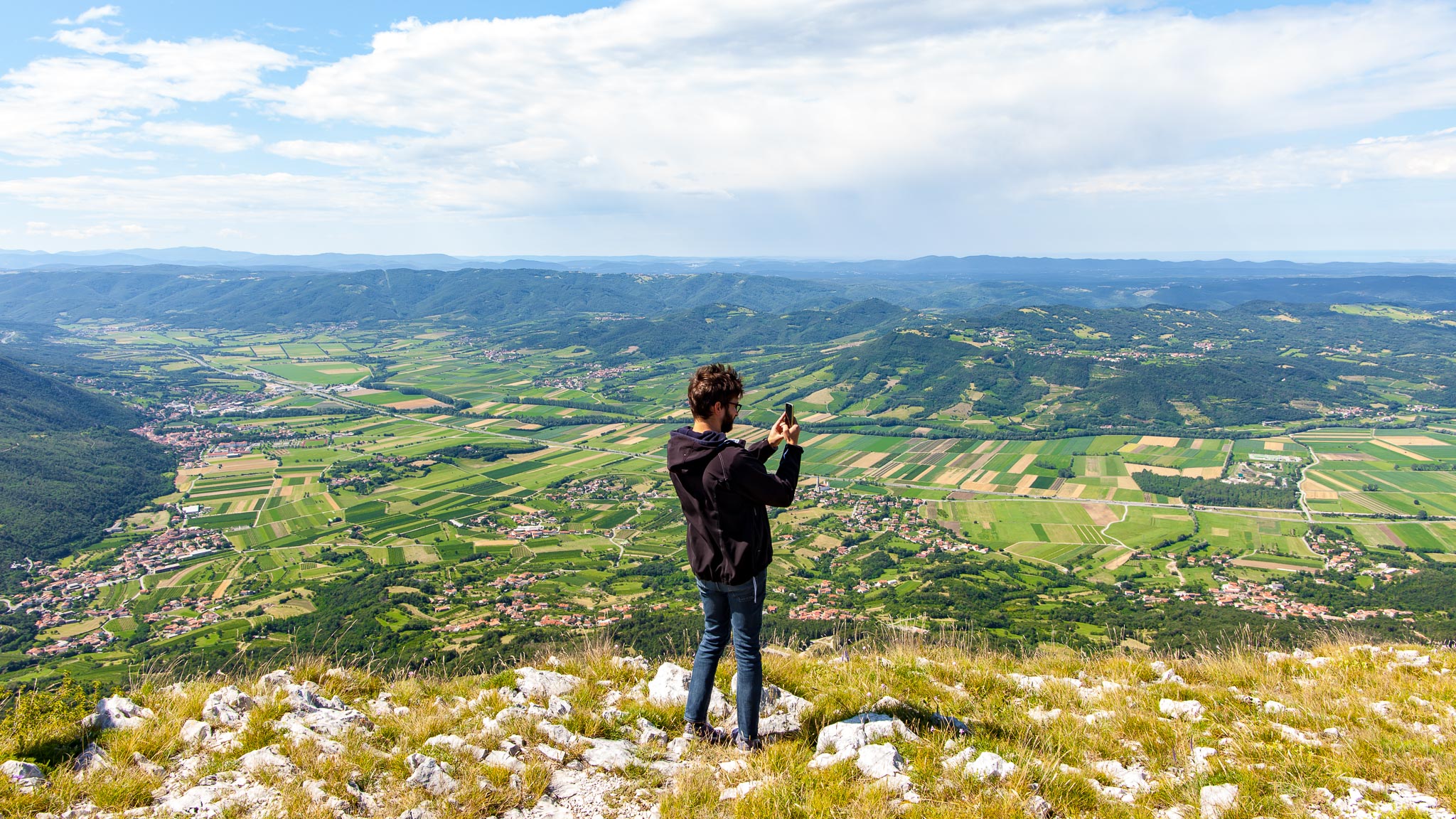
On a slightly chilly morning, armed with a flask of Jani’s home-brewed tea, we ventured to the peaks to catch the sun breaking.
This man knew the valley like the back of his hand. As we sipped, awaiting the sunrise, he told me about how his start-up company Wajdusna, had blossomed in recent years, offering a mix of day trips, tours, and full travel itineraries in the Vipava Valley. Whether you want an activity-laden tour or a lazy bike ride between wineries, I can not recommend this man highly enough to help you make this happen.
The rays casting through the clouds marked another day of wine-tasting and storytelling, but a hearty hike through well-marked tracks, grazing cows and taking in the natural frame of Vipava Valley, the Otlica Window, was the perfect morning activity. The vast karst landscape that hugs Vipava is ideal for strapping on boots, pumping up the tyres of a mountain bike or taking to the skies with the help of the Burja.
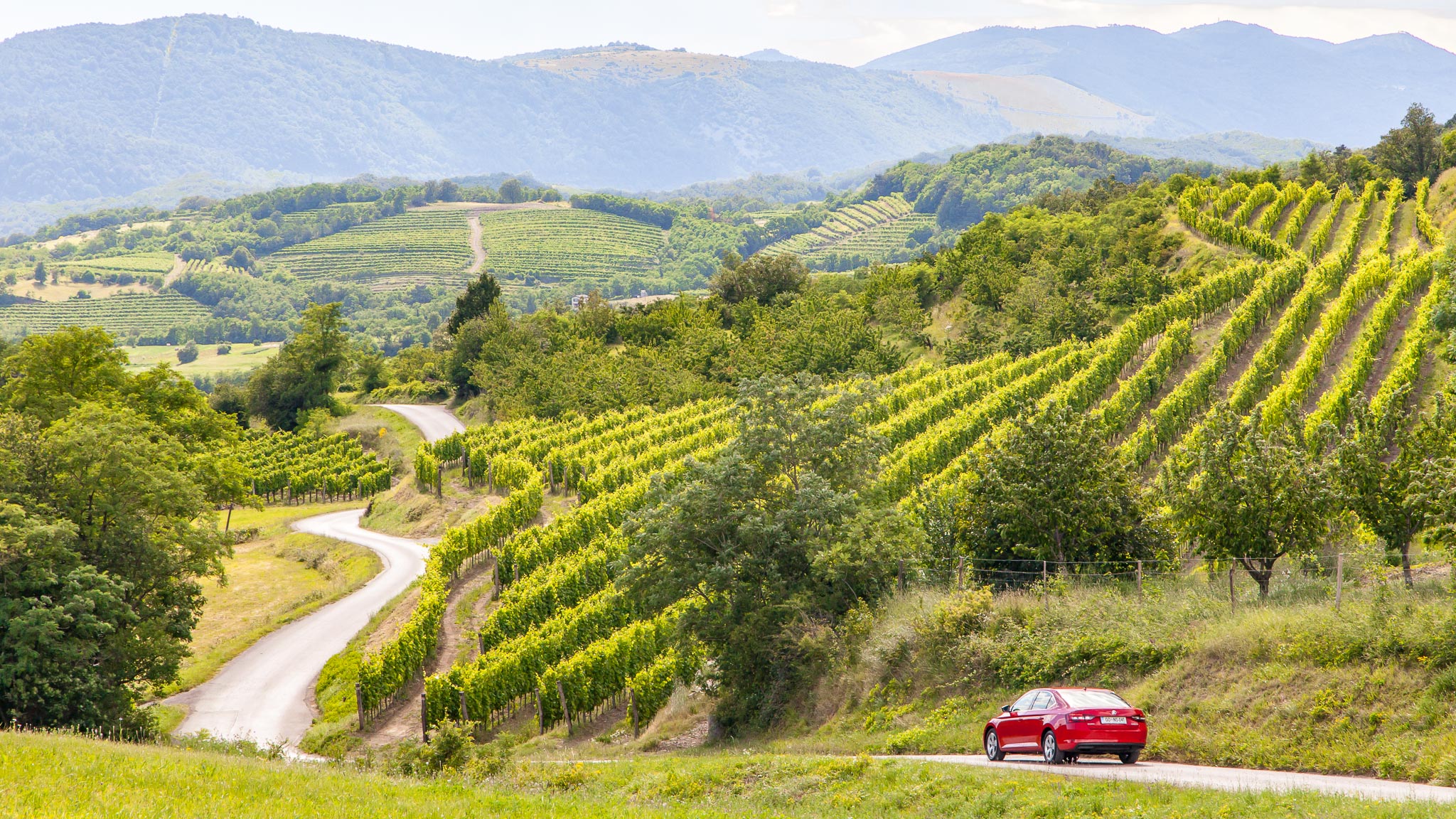
Farm-to-fork turret dining in Faladur
The history of Ajdovščina is evident the second you walk through the old city walls crowned with turrets. In fact, one of these watchtowers was the very reason we were here.
Five years ago, Matej founded Faladur, which started as a local produce store built into one of these turrets. What began as a shop with a passion for selling the best of Vipava slowly blossomed into tastings, snacks and then a restaurant.
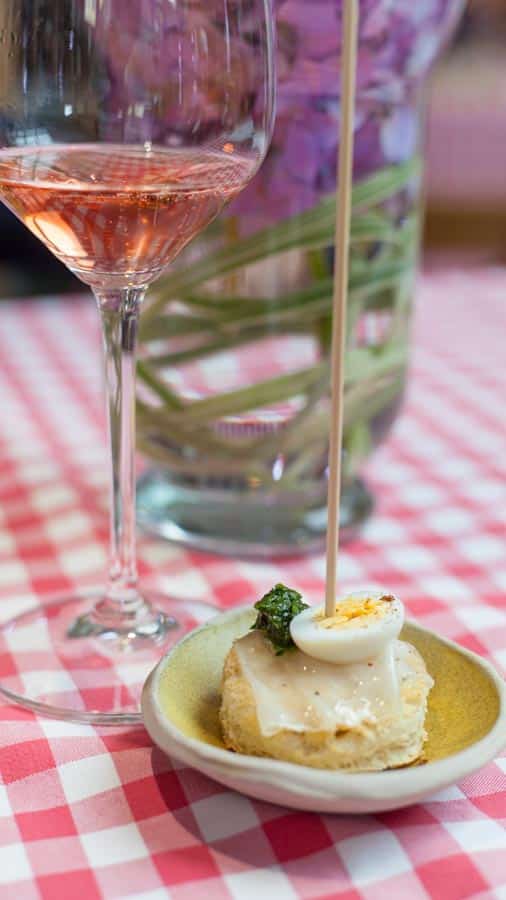
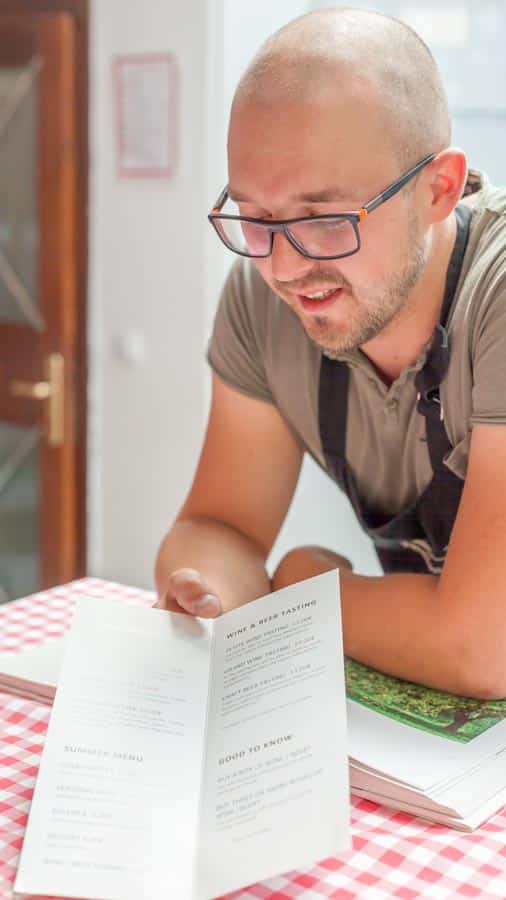
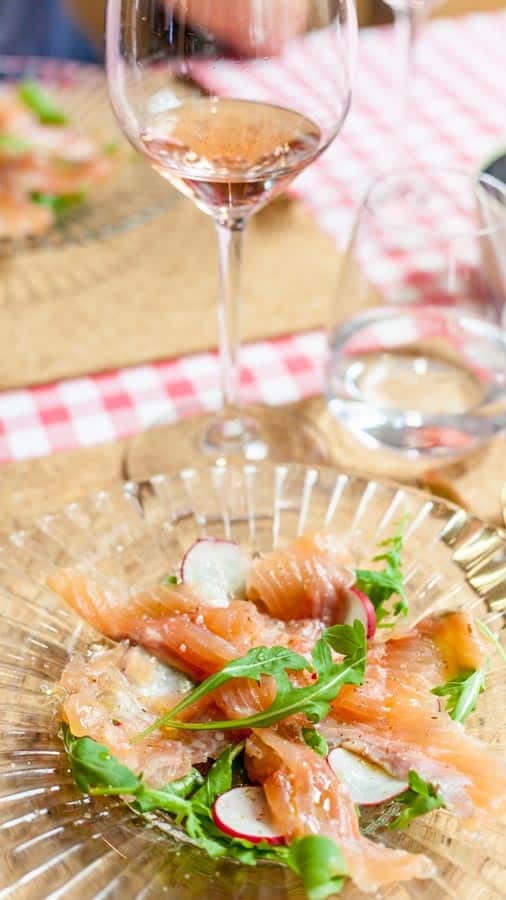
Learning from Ljubljana, the nation capital’s successful pedestrianisation project, Ajdovščina followed suit to reduce car traffic. Now, the handful of tables bask in the glorious sunshine as well as the cute interior. However, the number of tables is purposefully kept low to ensure service and personal recommendations can be delivered. This meal wasn’t just for consumption; it was a mini master class in local gastronomy and vinification.
Sinking my teeth into a delicious vegetarian salad of green beans with subtle seasoning and fresh-cut salmon, the small team worked diligently in the open-plan kitchen. Locals nipped in to refill 5-litre bottles with wine or to pick up olive oil, and by the time my favourite dish arrived, polenta with pancetta, quail eggs and raw garlic, I yet again felt like a friend in his home.
Hospitality is one thing they have in excess here in Vipava, and accompanied by the craft beer of Ajdovščina, a guest offering on the day’s tasting menu, every bite and sip was delicious.
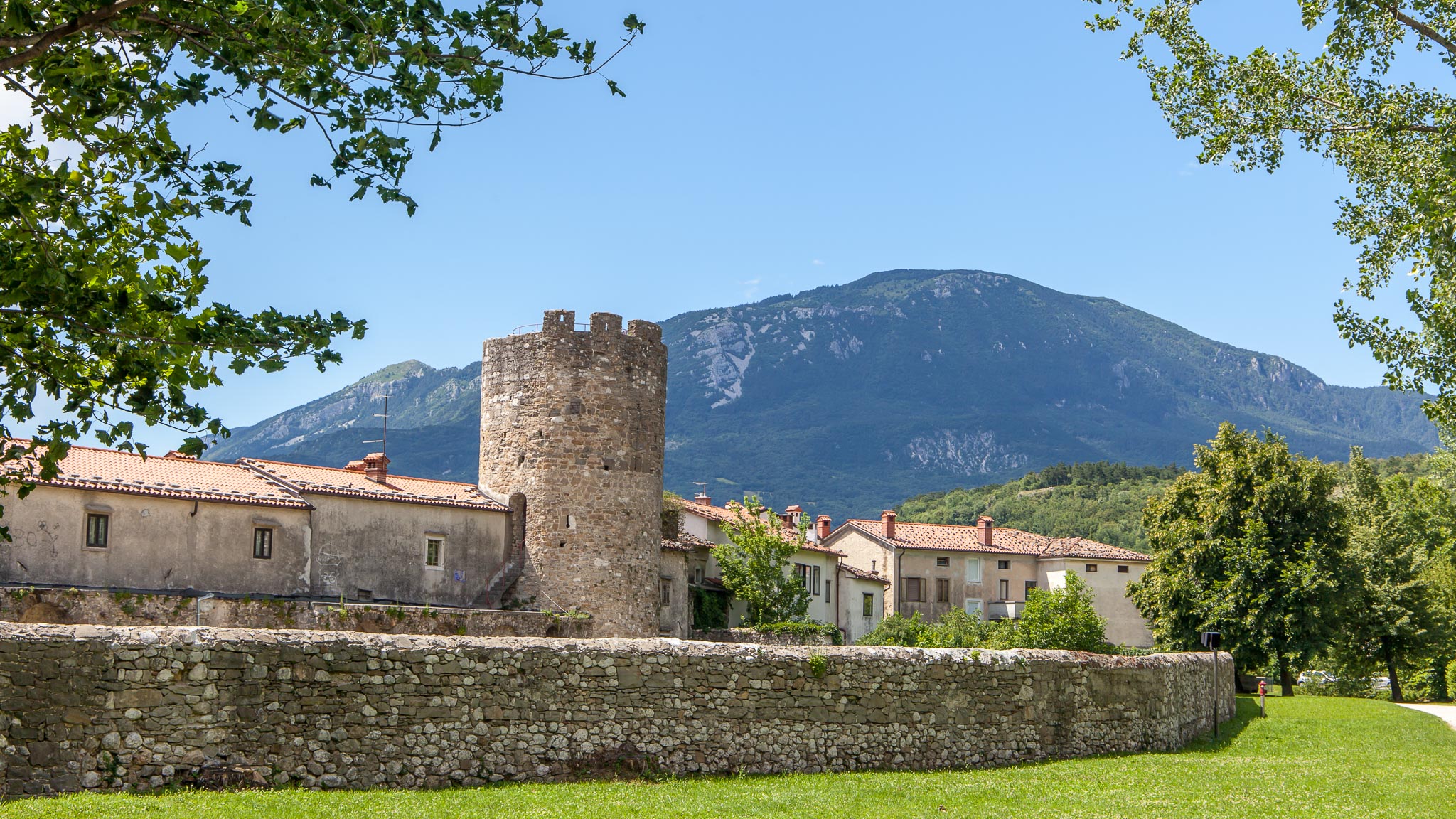
Finding art and community ahigh at Penzion Sinji Vrh
On the upper part of the Vipava Valley, a spread of cured meats and cheese awaits when you arrive at Sinji Vrh. That is after you’ve managed to wrestle your eyes away from the aerial views.
Surrounded by forest trails and at an elevation of 1000 metres, this retreat is much more than a restaurant serving delicious dishes. Here a host of accommodation and workshops take place and it has become well known as an artist escape for many in the know types across the continent.
You can draw inspiration from the farm, sleep in large group accommodation or a basic and typical stone house and then paint, draw or create to your heart’s content with scenery and fellow artists as your companions and inspiration.
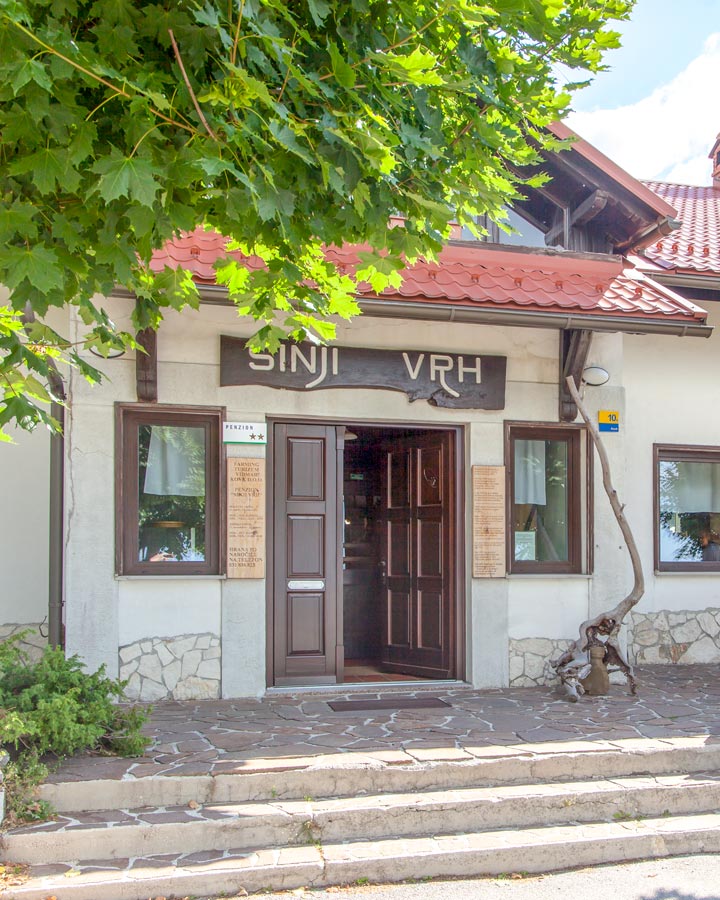

Pasji Rep’s passion for Zelen
The famous and local grape of Zelen makes for a crisp, refreshing wine that can only be found in the Vipava Valley. At Pasji Rep, where four generations of wine production have focused on this indigenous grape, you can sample it both from the cellar or the tasting room and, if lucky, the Merlot that is only produced during especially good vintages.
The prized grape of Zelen nearly disappeared, with only two acres of the vine left at one point. Franc, the father and his friend set out to replant and regrow the grape, which now produces around 150,000 litres per year.
The Pasji Rep brand is one with history, pride, and stories of not giving up. Whether you join a tasting with Franc or his son, you’ll quickly realise how much effort this family has put into preserving this boutique wine.
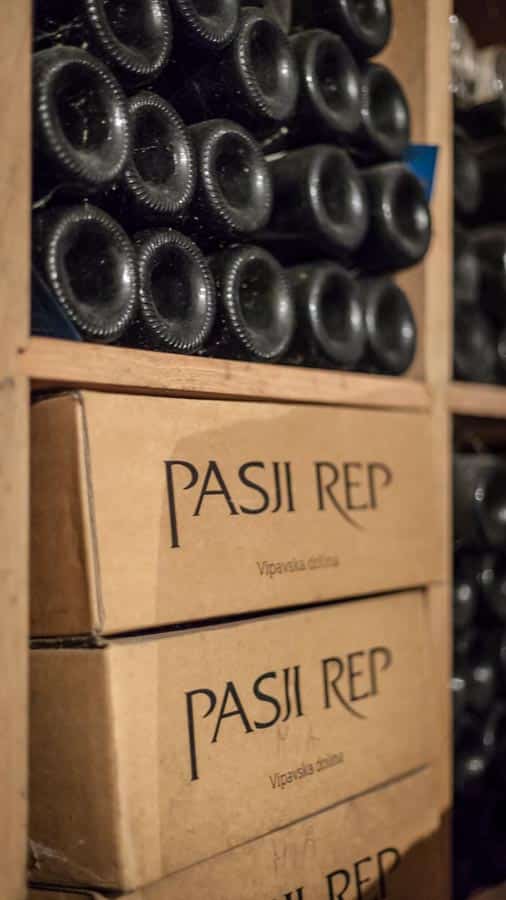
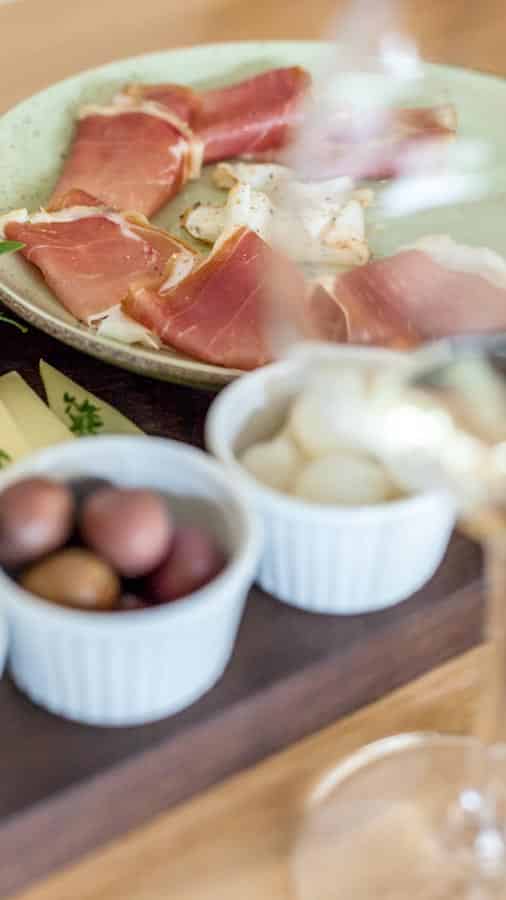
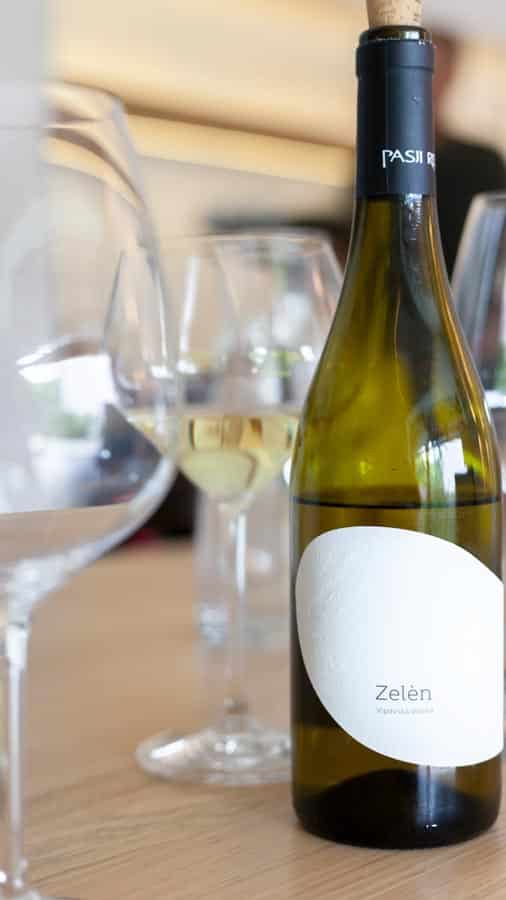
Opening a bottle with the family at Lepa Vida
As the first cork was removed at Lepa Vipa Winery, Mattia paused pouring to alert Alena, his wife, to a tiny bird trying to access their barn. As she steps out to slide open the great door, Mattia explains sometimes their flying friends need a hand accessing the birdhouse they have built. The community in Vipava Valley isn’t just about humans; it is about nature living in harmony.
“People in the village come to help pick the grapes; everyone helps each other out, especially for harvest. A community for us is with family and friends:” Mattia chitchats while loading the table with more mouth-tingling treats from his friend’s businesses and farms. Alena continues telling me about their two children as he disappears back into the kitchen.
It’s meetings like these that put you at ease. I thought back to my first visit to Slovenia six years prior when I left declaring Ljubljana the cutest and the most friendly capital city I had ever visited and was reminded of the moments then and now, which make Slovenia such a special place when I recount my travel stories.
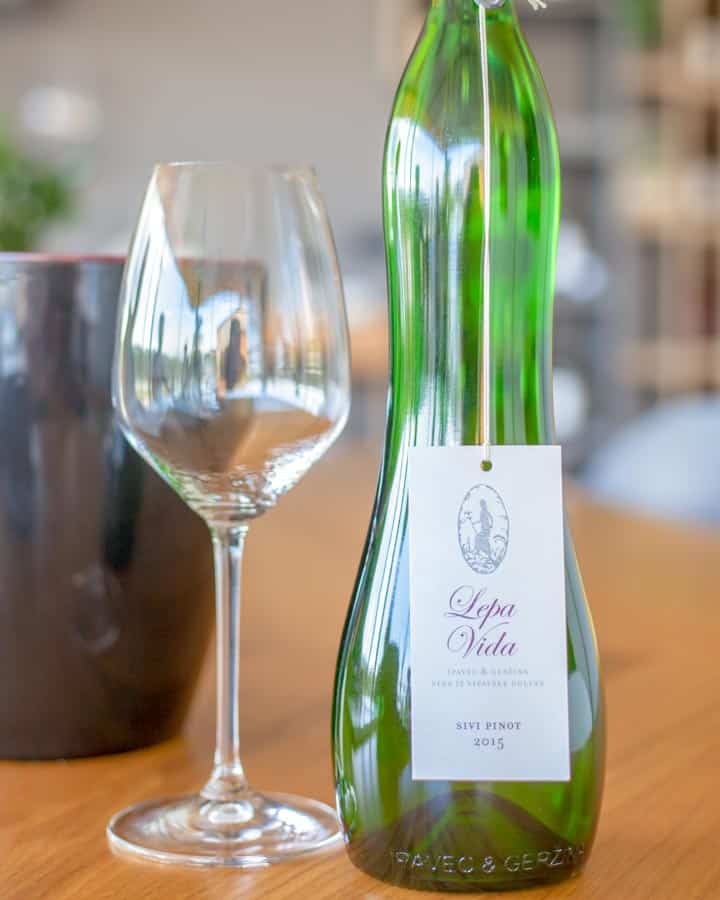

The Lepa Vida vineyard expanded across six different locations as the plots were split during the Austro-Hungarian empire. The unique terrain, famous wind, and separate plots create microclimates here, which aid in wine production. I heard locals say more than once that snow is measured in hours, not centimetres, in Vipava, which gives you an idea of how quickly the climate can fluctuate.
The business is a young baby in the wine trade, having only opened in June 2017. Mattia and Alena met in Australia and wanted to create a place where they could share stories and wine with guests, although wine production was never their main background. From the seed of an idea and a newly constructed tasting room, Lepa Vida was born.
Hearing how their love story had become the wine we were sipping, I couldn’t help but feel more than a little jealous of the beautiful life they had built here at home as I sampled the unique orange wine from their equally unique bottle designs.
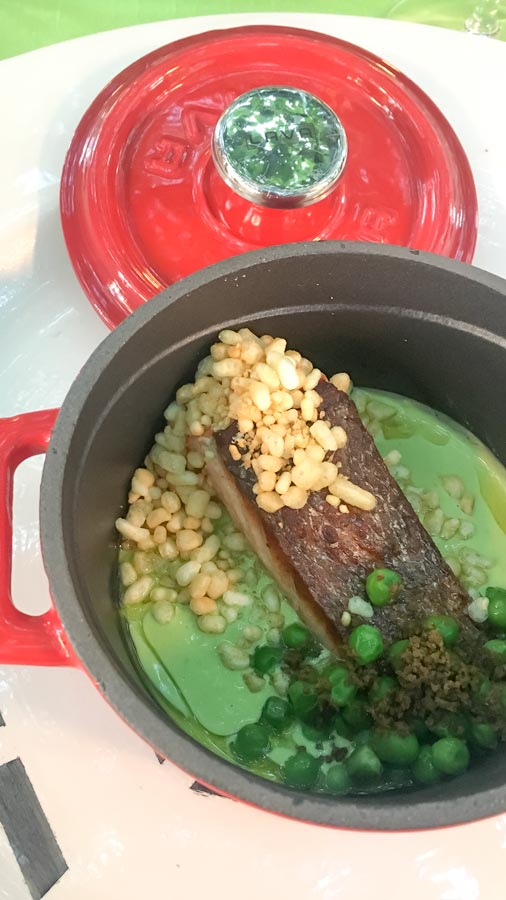
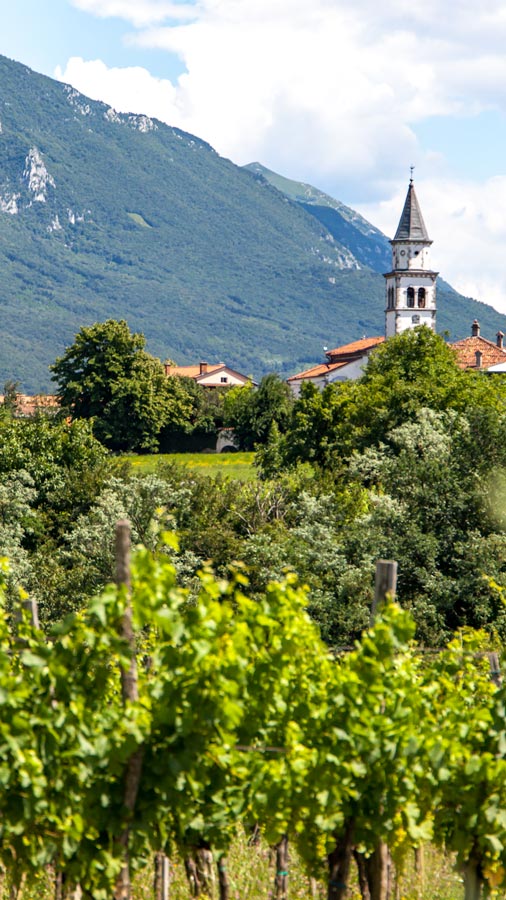

Camping and fine dining combined at Saksida
By now, I’ll admit I was a little tipsy and ready for a degustation dinner, but pulling into the campsite of Vina Saksida. I was a little confused, though I knew not to be concerned after all of the surprises I had encountered so far.
Yes, this was a campsite offering tent pitches alongside a swimming pool, but as I had grown accustomed to by now, there was also a wine cellar, there was wine production, and the restaurant was, of course, going to be both delicious and stylish.
The dishes and wine-pairing flowed with ease as the family-produced wines washed down dishes ranging from deconstructed stews in test tubes to tender pork cheeks in rich sauces. “This is home-cooking and local dishes as our grandmothers used to do”, I was told, struggling to believe that all the grandmothers in Vipava hadn’t been Michelin-starred chefs.
As a beautiful sunset faded into the vineyards, more dishes from the extensive menu arrived, and for the first time in a long time, I felt complete and utter relaxation and contentment. If you want to escape to the good life, Vipava Valley is where you can.
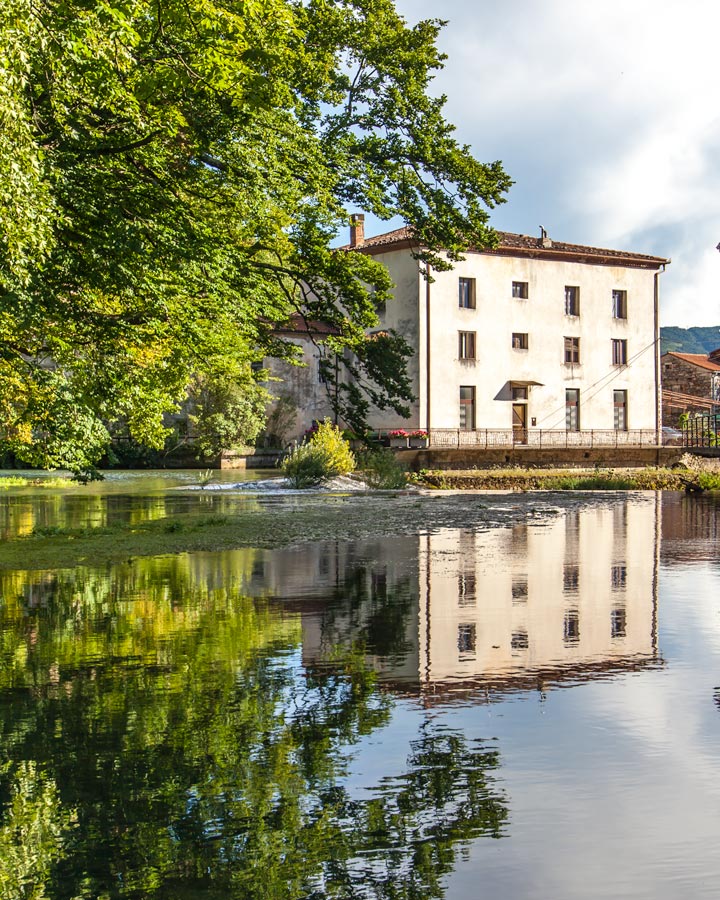
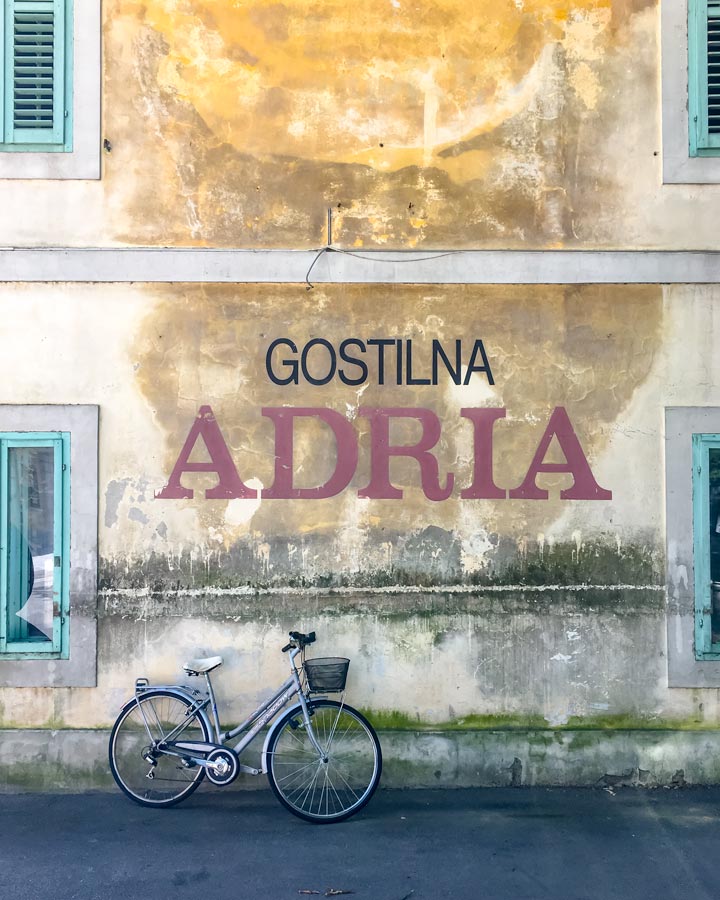
Wandering around Vipava
Given the name of the Valley, you might assume that Vipava itself would be the largest town, but this quaint spot doesn’t lay claim to that title.
Wandering through the vintage-washed buildings, where cafes and bars spill out into shaded gardens or outside bars sit alongside rivers so still they look like mirrors, make this an ideal pre-dinner drink spot or a place to dine, though certainly don’t make a beeline here expecting it to be the main buzz of the valley.
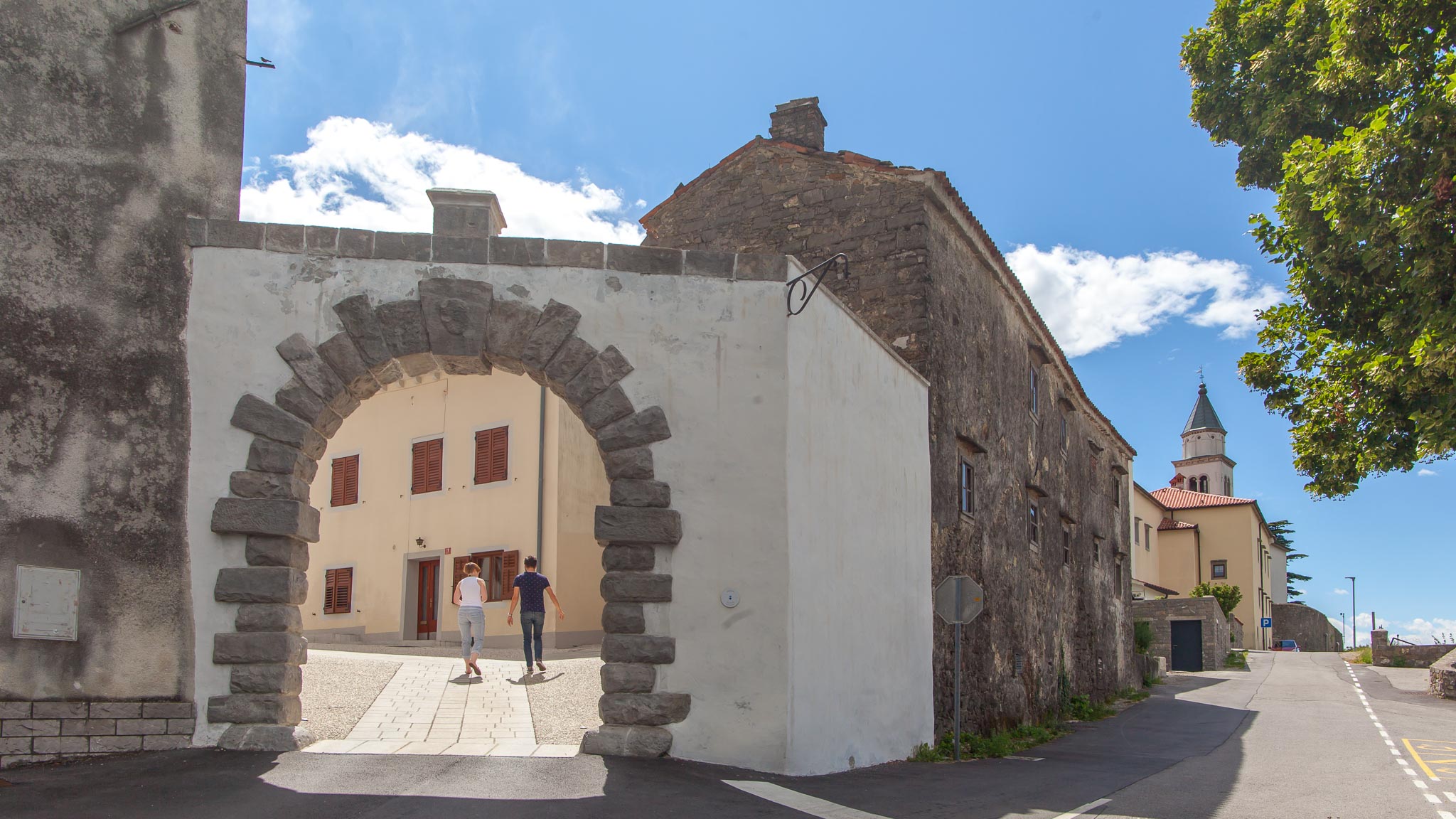
Walled history at Vipavski Križ
With so many villages to choose from during your Vipava Valley visit, it can be hard to narrow down, but I highly recommend taking a guided tour through the 15th-century village of Vipavski Križ.
Situated on an old trade route which has seen Ottomans traversing its paths, the fortified walls of the castle now lay pretty devoid of people inside, so much so you can pick up a derelict house here for just a euro, providing you put in the restoration effort.
That’s not to say it is all in disrepair at all, with many charming houses and buildings having been restored along these cobbled streets. A unique flooring system of different colours highlights where royalty and influential people were separated from the working class who lived inside.
Of course, like any good tour in the Vipava Valley, we ended up in an underground cellar sampling wines before hitting up the well-stocked local store full of bespoke chocolates and Vipava-produced gins where Mirjana, the owner, gleefully walked me through all the treats in her store-come-cafe.
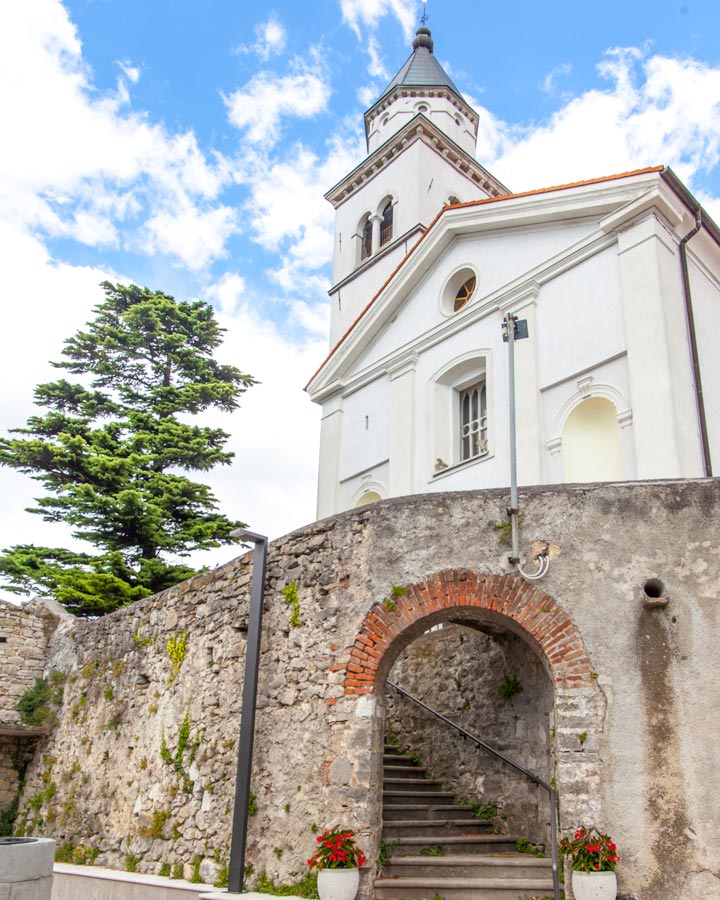
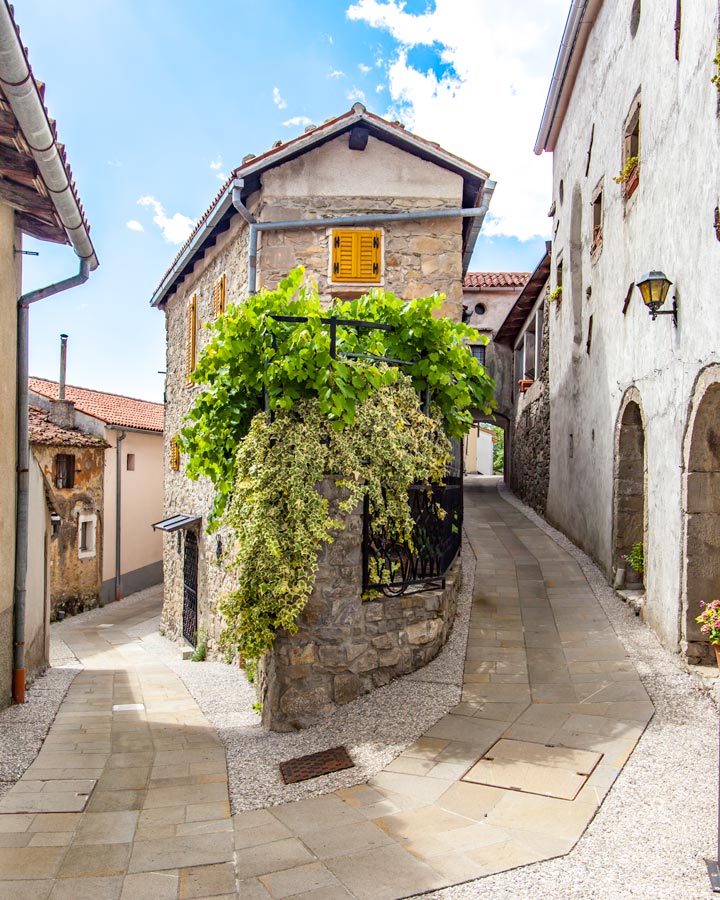
A Michelin-starred finale at Gostilna Pri Lojzetu – Castle Zemono
Jani had saved the best till last, and as we drove into Castle Zemono, with a prime position and stunning views across the valley both during the day and for sunset, I was captivated by the charming Villa that was now a restaurant.
A little fact that surprised me throughout my visit is that Slovenia is devoid of a Michelin star, which seemed crazy given how much passion goes into both the food and service here. After the incredible meal that was to follow through, served up by Tomaž Kavčič, undoubtedly one of the best and most famous chefs in the country, I was convinced this place deserved at least one, if not two.
At Gostilna Pri Lojzetu, I was welcomed in the most friendly of ways. Coming from a high-end restaurant background, I prefer relaxed restaurants, and the welcome here consisted of a small bottle of wine and a spread of thick soup and baguette on the table. You sip the wine from the bottle, tear the bread apart to mop up the soup and instantly, as intended, you feel at home rather than in an uptight restaurant.
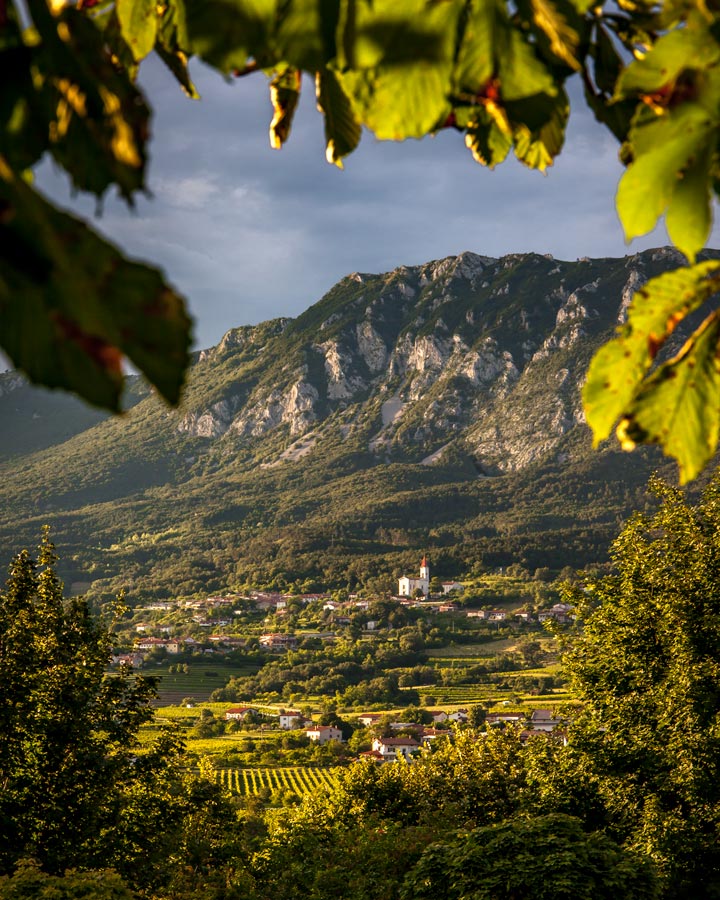

The philosophies of Tomaž are just these. Culinary genes have run in the family for three generations, from his mother to his daughter who now works here. The restaurant has moved from small, traditional, and humble beginnings into this world-class venue, which often hosts weddings and is highly regarded as one of the top restaurants in the country.
While the wine cellar is well stocked with over 800 wines and champagnes from around the world, the degustation menu I devoured stayed true to form and was accompanied by local Slovenian wines only.
The dishes that followed were a real journey of the senses. In a non-ridiculous way, perfectly cooked fish stacked on rock-hard salt was accompanied by a finger bowl of rocks to amplify the fish’s homeland. Anchovies, which I detest, were so moist I wanted more, with the black cuttlefish shavings on top perfecting the flavours.
Each dish outdid the last and by the time a Gin and Tonic sorbet rounded off the meal, complete with dry ice and herb infusions floating across the table I was convinced I would never have a better meal again. Surprisingly, Tomaž had found the time in recent years to create his own Gin, fresh back with a gold award from the USA Spirit Society.
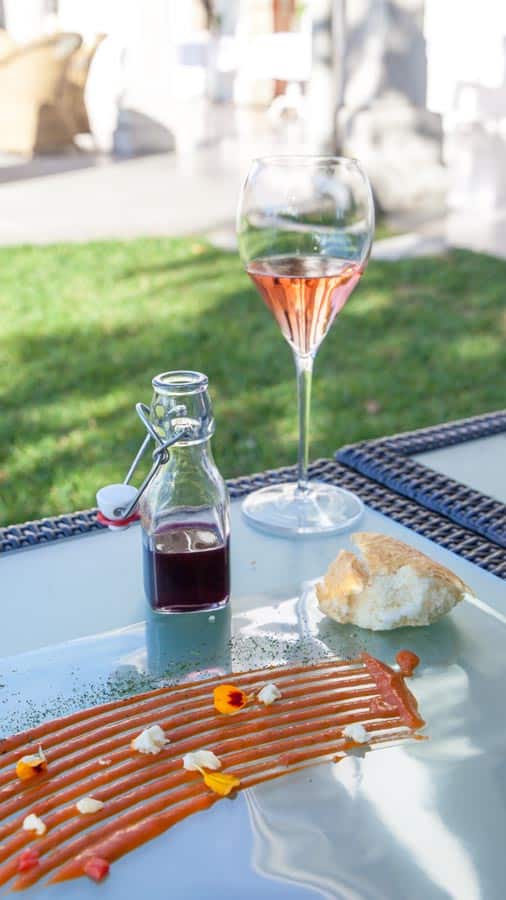
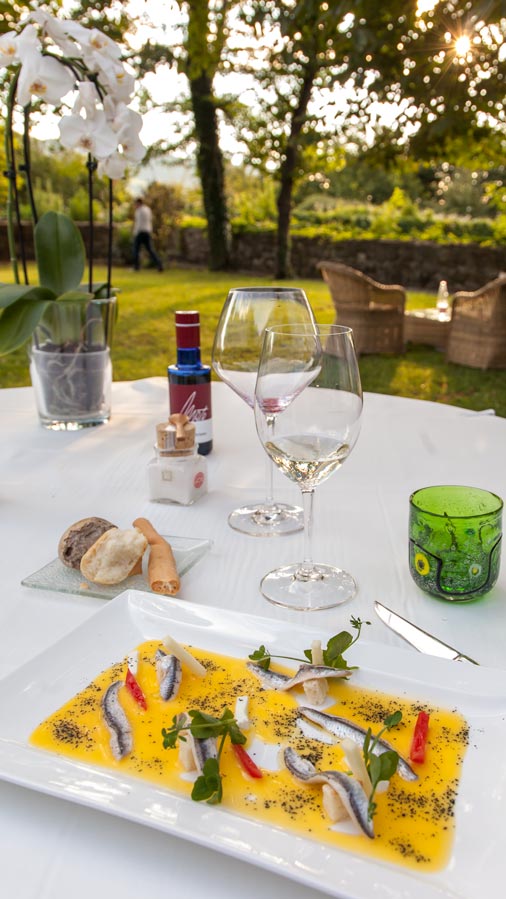

I took my final sip of Zelend, gazing out on the mountains, the last sun rays of the day dancing on white church spires, and I started grinning. I don’t remember a time in my adult life when I had felt this relaxed, this well-fed or this happy to have been in the company of so many welcoming strangers.
My time in Vipava Valley had left me full of bespoke wines and remarkable foods, but more importantly, full of heartwarming memories. Vipava Valley isn’t just a foodie destination; it’s a feel-good destination. And I raise a glass to anyone who stumbles upon this Slovenian secret, promising you this: you are in for a treat!
Make it happen
How to get to the Vipava Valley: Both trains and buses run from Ljubljana, where international flights also connect. Trieste in Italy is also close by, while Venice offers better flight connections for most, and transfer can then be used to Vipava Valley.
Tours, activities and wine tastings: Reach out to Jani at Wajdusna
Sleeping: Rooms at Majerija start from 73 euros + tourist tax for single use while campsite pitches, camper parking, and hut accommodation are available at Saksida

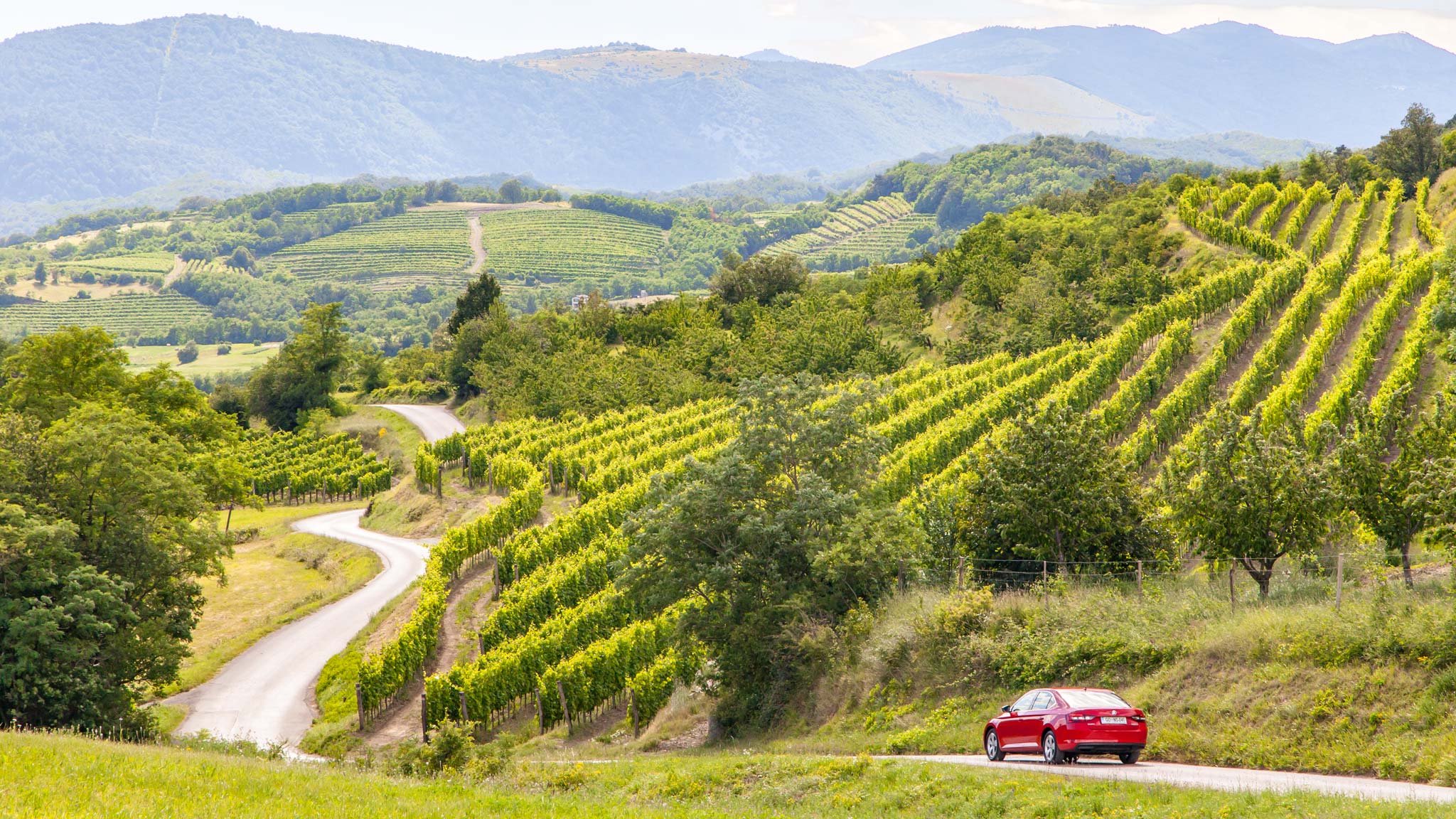



Ahh so lovely seeing my home country here :)
And what a beautiful country it is :)
Good article enjoyed reading… thank you…
wow daniel you have described the valley beautifully but we are not able to visit there i hope one day i will visit .
love from india
Just wonderful! The scenery adds more to the presentation of dishes than the plate itself.
Nice post! Thanks for sharing!
look like a Paradise
Great read and photos. The word sustainability is of immense importance. Sustainable growth is the need of the day. Vipava valley stands tall on that front. Thanks for sharing.
Just love this site!
Wow. You described “our” valley so beautifully. Most of the times we don’t pay attention to it’s beauty and take it from granted. Thank you for show us our home from you eyes. It was very heartwarming to read.
Greetings from Vipava valley
You have such a magical home Mojca, but I think we are all guilty of not appreciating what we have on our doorstep! Thanks for reading :)